#quote blogging 2021
Text
Men jag kan inte döda någon’, sa Jonatan, ’det vet du, Orvar!’ […] ’Om alla vore som du’, sa Orvar, ’då skulle ju ondskan få regera i all evinnerlighet!’ Men då sa jag att om alla vore som Jonatan, så skulle det inte finnas någon ondska.
— Astrid Lindgren, Bröderna Lejonhjärta
But I can’t kill anyone,” said Jonathan. “You know that, Orvar.” […] “If everyone were like you,” said Orvar, “then evil would reign forever.” But then I said that if everyone were like Jonathan, there wouldn’t be any evil.
#Swedish#astrid lindgren#brothers lionheart#bröderna Lejonhjärta#literature#swedish literature#quote#found this when I was writing abt Astrid in 2021 I think#polyglot#langblr#language blog#se
15 notes
·
View notes
Note
Wirt: You’ve got to learn to love yourself.
Dipper: But don't you hate yourself?
Wirt: Yeah, but this is about you. Stay focused.
Dipper: But-
Wirt: Do as I say, not as I do damn it!
Greg, in the background: ...Guess he remembers what I taught him???
#incorrect quotes#dipper pines#gravity falls#gf dipper#otgw#over the garden wall#otgw wirt#pinescone#otgw greg#I had to look this quote up on the blog bc I thought I recognised it and I did!!#21 December 2021 I posted a quote similar to this :D#without a few extra lines but still#the additions make it so much better lmao! thanks for the classic quote anon it’s amazing#those kids need therapy they got self deprecation and hate written all over them#and FNGNMSKS GREG#Greg completely glossing over the self hate and being like ‘yo he remembered what I taught him!! :D’
44 notes
·
View notes
Text
Pit: How is spring not everyone’s favorite season? The trees are PINK, guys!
Palutena: Allergies are also a problem, y'know.
Pit: But pink.
Dark Pit: And it's hot.
Pit: PINK!
#kid icarus#kid icarus uprising#pit kid icarus#dark pit#palutena#incorrect kid icarus quotes#there's an incorrect kid icarus quotes blog#but its been dormant since 2021#so I'll do it myself
17 notes
·
View notes
Text
thinking i need to experiment and push outwards again cuz i feel stagnant on here as of late :/
#not edits#in my defense- such is life when you're not focusing on a blog 24/7 lmfao#spent most of 2021 living and breathing this project and ever since i've been just kinda like waning and waxing#btwn really tuned in and harmonic with the blog- and like the exact opposite where editing feels like pulling teeth sometimes#hell maybe it's time for me to give up the ghost and let myself quote unquote retire? i won't yet but like it's on my mind#uo year 4 is gonna be interesting to say the least
15 notes
·
View notes
Text

Fitness quotes
#fitness quotes#fitness#quotes#motivational fitness quotes#fitness quotes for motivation#fitness motivation quotes#inspirational fitness quotes#fitness motivation#health and fitness quotes#fitness quotes motivation#motivational quotes#inspirational quotes#workout quotes#gym fitness quotes#fitness quote#fitness quotes 2021#dumb fitness quotes#fitness quotes blog#best fitness quotes#funny fitness quotes#fitness quotes status#gym quotes
2 notes
·
View notes
Text

#my stuff#journal#scrapbook#2021#tiger#poetry#quotes#siegfried sasoon#submitted this once to the daily tigers blog i do love it
2 notes
·
View notes
Text
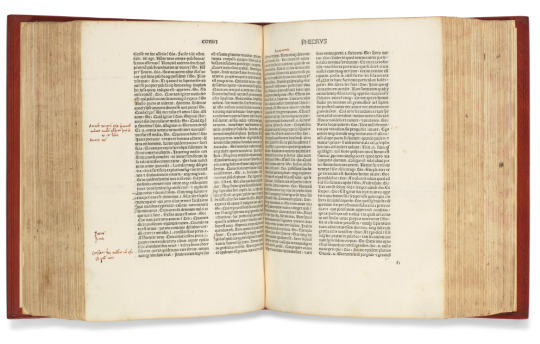
The Ripoli Press was the first press in Florence to operate for a significant period, its cloisters filled with the daughters of illustrious Florentine families producing a wide range of books. Their operations from 1476 are documented in the manuscript diario of the convent, written in the hand of Fra Domenico (whose death in 1484 seems to have ended printing activity at the house, making Ficino’s Plato their final work).
The Plato was “by far the largest printing job the press had ever undertaken…the commission of such a significant edition—the first translation of all the works of Plato into any Western language—underwritten by friends of Ficino himself, suggesting the press had gained a very good reputation within the influential and monied humanist circle in Florence” (Conway).
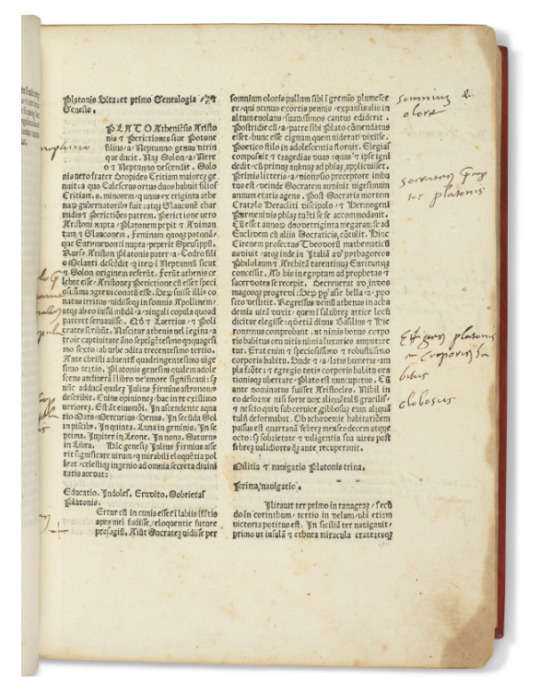
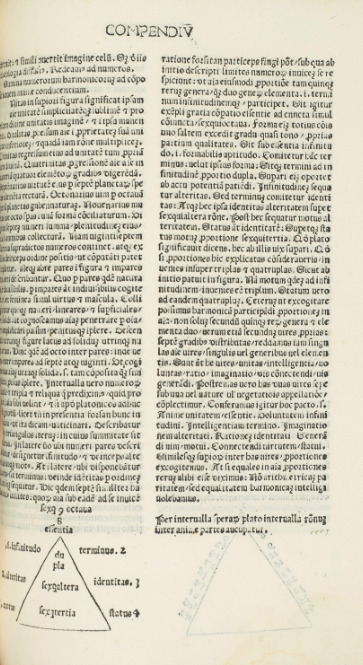
#Marsilio Ficino#ripoli press#early modern italy#15th century#quotes from the Christie's page which auctioned an edition of the book lol#back in 2021#history#marsilio blogging
2 notes
·
View notes
Text
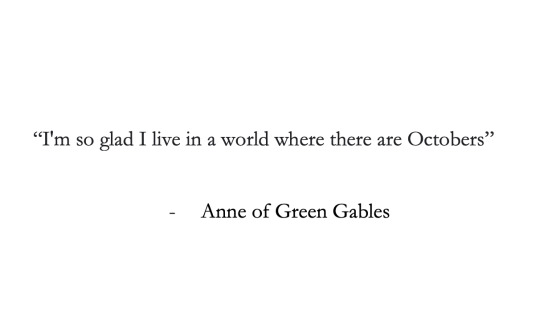
Anne of Green Gables (1908)
#the quote that started it all#this is what inspired me to make welcome-month posts since October 2021 when I first started doing this to look forward to each month#at first I thought: that's some great enthusiasm for the unpredictability of the months but little did I know it would inspire me to#romanticize my life like Anne of Green Gables did with Octobers - even the idea of this blog/account was born as an attempt to romanticize-#everyday life/ordinary tasks and it stuck#october 2021#october 2022#weather#fall#autumn#anne of green gables
13 notes
·
View notes
Text
"It'd have been awkward if he was lying on that chair with his face up instead"
or musical theatre commentary without context
#the quote belongs to an actress not to a fan btw#musical blogging#quotes#וסיליסה כשמה כן היא. מלכה. וגם מלקה בקונקטסט המאוד ספציפי הזה חחח#ty queen for reminding me why I loved you back in 2021. icons remain icons
0 notes
Text
jestem zagubiony i trochę poniszczony
po nocach myślę o tym jak cię zdobyć
nie potrafię już nikomu zaufać
choć chciałem być przy tobie i zawsze słuchać
twojego głosu
gdy mówisz, że mnie kochasz
zniszczyłem wszystko.
0 notes
Text
Inevitable (El Despertar del Monstruo)
Llegar a un punto de tu vida en el que puedes sentir, muy dentro de tu ser, que vas a ganar la partida; y que nada ya te va a separar de tu gran propósito es como el despertar del monstruo: inevitable.
#Messieral #Overthinking #Poesía
«Llegar a un punto de tu vida en el que puedes sentir, muy dentro de tu ser, que vas a ganar la partida; y que nada ya te va a separar de tu gran propósito es como el despertar del monstruo: inevitable».
— Messieral
REDES SOCIALES
Instagram
Twitter
YouTube
Facebook
Spotify
WordPress

View On WordPress
0 notes
Text
TwinFlame Souls & Soul Mates © Michael Jackson TwinFlame Soul Official/ Susan Elsa
TwinFlame Souls & Soul Mates © Michael Jackson TwinFlame Soul Official/ Susan Elsa
Dear World
Today I have an important article for you, like I have not been really focusing on for the past few years. I basically had private things going on and took a long, long 2-3 years pause from blogging really, except few posts at times, in 2017.
I have not even seen certain things going around, horrible copycat moves against my company and lies to fool you, but I won’t even mention it…

View On WordPress
#Be careful about DANGEROUS FALSE INFO OUT THERE - Michael Jackson Twin Flame Soul Official Warning over Imitations & Plagiarism to Misle#Legal Note to Refrain from Copyright Publishing Right Infringement and Lies to Debbie Deborah Stefaniak by Mystery Garden and Susan Elsawi#Michael Jackson TwinFlame Soul Official - Copyrighted 2010/2012#Michael Jackson TwinFlame Soul Official - Original Blog#Official Legal Note by Mystery Garden for Deborah Vitale Stefaniak#Susan Elsa channels Michael Jackson Live in Egypt Spontaneous Stage Performance#Susan Elsa looking like Michael Jackson Naturally at the Same Age Twin Flame Soul Merging Truth 2021#Susan Elsa turning into Mirror Image of Michael Jackson and Vise Versa TwinFlame Soul Truth in Physical Reality#Susan Elsa Works & Releases Copyrighted#The combined term "Twin Flame Soul" Mate was created by SUSAN ELSA and is part of © Copyright Title by Susan Elsa - "Michael#TwinFlame Souls & Soul Mates © Michael Jackson TwinFlame Soul Official/ Susan Elsa#TwinFlame Souls & Soul Mates Difference#TwinFlame Souls & Soul Mates Education by TwinFlame Soul Expert No 1 Worldwide#TwinFlame Souls & Soul Mates Information A-Z#TwinFlame Souls & Soul Mates Truth Article#TwinFlame Souls Discussion Online and the Truth
0 notes
Note
Hello, in fic I've come across mentions of
- the elves stopping frequently on their journey to Aman to have sex (and Orome urging them forward by creating storms?)
- elf sex being too intense for most mortals to survive
I think these come from HoME or NoME (or similar sources), but I've never seen the actual quotes. There might be other things related to elf-sex in there as well.
So I guess my question is: What else did Tolkien mention about elf sex, apart from (the already relatively well-known) LaCE?
Elf Sex Lore
There comes a time in every Tolkien fan’s journey when they come upon the Professor’s writings on Elf sex — and, since 2021, there are even more! Elf Sex Lore remains a hot topic as the fandom continues to experience the aftershocks of the spurt of new lore that came with the publication of The Nature of Middle-earth (NoMe) in 2021.
As you say Anon, before NoMe was published, the fandom’s primary resource on Elf sex was the (in)famous essay Laws and Customs Among the Eldar (LaCE), published in 1993 in Morgoth’s Ring, the tenth volume of the History of Middle-earth series. LaCE is full of juicy (or not-so-juicy) lore about Elven aging, marriage, gender roles, naming, death, and rebirth.
It is in relation to the first two that we get some details on Elf sex, such as the knowledge that “it was the act of bodily union that achieved marriage, and after which the indissoluble bond was complete.” (Laws B). We also learn that:
“…the Eldar say* that in the begetting, and still more in the bearing of children, greater share and strength of their being, in mind and in body, goes forth than in the making of mortal children. For these reasons it came to pass that the Eldar brought forth few children; and also that their generation was in their youth or earlier life, unless strange and hard fates befell them. But at whatever age they married, their children were born within a short space of years after their wedding. For with regard to generation the power and the will are not among the Eldar distinguishable. Doubtless they would retain for many ages the power of generation, if the will and desire were not satisfied; but with the exercise of the power the desire soon ceases, and the mind turns to other things. The union of love is indeed to them great delight and joy, and the ‘days of children’, as they call them, remain in their memory as the most merry in life; but they have many other powers of body and of mind which their nature urges them to fulfil.”
The History of Middle-earth Vol. 10: Morgoth’s Ring, ‘The Later Quenta Silmarillion (II)’, Laws B
*Note how this paragraph is introduced: “the Eldar say”. Phrases like this signal to us that LaCE is not written from a Elvish point of view. There are indications elsewhere clearly pointing to a human author with a human audience in mind.
Translation: Elves use up a lot of energy in baby-making, including in the sex part (“begetting”) but even more in the pregnancy and birthing part (“bearing”), so they don’t have a lot of children and they do so early in life, shortly after marriage. But even if they marry later in life, Elves are still able to have babies because being able to and wanting to reproduce are the same thing for Elves. But once they’ve fulfilled the desire to make babies they’re good and turn to other things. Still, they look back on the time of baby-making as “the most merry in life”.
In most (if not all) cases, when Tolkien writes about sex he is writing about reproduction. Did Elves have sex solely for pleasure? Maybe; I cannot find anything that says they didn’t. I also can find little conceptual separation of sex and reproduction in Tolkien’s writings. Make of that what you will.
(At this point I want to reiterate a principle central to this blog: it’s about presenting what canon says; it is not about casting judgement on creations that subvert, reinterpret, or ignore canon, none of which makes a work lesser than one which adheres strictly to canon.)
So what did NoMe add to our knowledge about Elf sex? First of all, let’s make sure we all know what NoMe is.
What is The Nature of Middle-earth?
NoMe is a volume of texts by J.R.R. Tolkien collected and edited by Carl Hostetter. It is basically a supplement to the last three volumes of The History of Middle-earth (Morgoth’s Ring, The War of the Jewels, and The Peoples of Middle-earth), which cover a period from the late 1950s to his death during which Tolkien was undertaking a rather massive project of worldbuilding, working out the structures underlying his Silmarillion mythology in preparation for revising and publishing what he had written of it before ‘a sequel to The Hobbit’ (LotR) took him away from it for the better part of two decades.
Christopher Tolkien in Morgoth’s Ring called this undertaking “analytic speculation concerning [the] underlying postulates” of his world (Foreword to Morgoth’s Ring). That’s how we end up with essays like LaCE and the philosophical debate about the fates of Men and Elves in Athrabeth Finrod ah Andreth.
The texts in NoMe all date to around the same time and deal with the same sorts of questions about the physics and metaphysics of the world: it contains the essay on ósanwë, for example.
The Context of the NoMe Sex Lore
The first section of NoMe, ‘Time and Ageing’, is where we get the new lore on Elf sex. As it happens, the sex lore is rather incidental to extensive ruminations two core questions:
How did Elves experience the passage of time and how did they age?
How did the population of Elves go from 144 at Awaking to a sufficiently high number (around 30 000) when they reached the shores of Beleriand on the Great Journey?
(It is not relevant to get into why 144 and why 30 000 here; suffice to say those are the numbers Tolkien wanted and he expended great imaginative and mathematical energy trying to make them work.)
A note on the textual context: Anyone who has ever engaged in worldbuilding knows how it can go. You think (for example), “Okay, I need to develop a backstory for this character’s spouse,” and before you know it you are knee-deep in invented genealogies and geographies and Eru-knows-what-else.
It’s important to bear in mind that this is what Tolkien was doing. The quotes we are about to look at (yes, very soon!) are from a collection of evolving (and unresolved) notes in various states of refinement from barely legible scribbles to carefully penned essays. I will let you decide what that means to you based on your personal definition of canon, but I wanted the textual context to be clear.
Elf Sex Is Intense
In relation to Question 1, Tolkien considers the time-scales of Elven growth, including pregnancy. In the essay under discussion, Tolkien decides that Elven pregnancy should, like human pregnancy, take about 3/4 of a year. Oh no - not that kind of year. A yên, a ‘long year’, the unit used by the Elves and to which the matter of their bodies (their hröar) is bound. Elves gestate for 108 Sun years.
I know what you’re asking: If the pregnancy lasts 108 years, then how long does the sex last?
No? No! You’re probably asking yourself why Tolkien hated Elf-women so much (don’t worry, he says there’s no pain…)! But Tolkien was interested in the first question, which he answered thus:
“On the other hand the act of procreation, being of a will and desire shared and indeed controlled by the fëa, was achieved at the speed of other conscious and wilful acts of delight or of making. It was one of the acts of chief delight, in process and in memory, in an Elvish life, but its intensity alone provided its importance, not its time or length: it could not have been endured for a great length of time, without disastrous “expense.”” (NoMe, p. 24)
An earlier version of this passage, which you may also come across in fandom, comes to a similar conclusion:
“But the act of procreation not being one of growth until the union of the seed and being under full control of the will does not take long - though it is longer and of more intense delight in Elves than in Men: too intense to be long endured.” (NoMe, pg. 27)
Translation: Pregnancy, like other aspects of physical growth, is a process of the hröa over which the fëa has no control; thus it is bound to unfold on “Elvish time”, i.e. 1 year = 144 years. But the sex leading up to it is an act of the fëa and under its control and therefore occurs at a “normal” speed. The Elves love it, too! But not because of how long it lasts, which is a regular amount of time, but because of how intense it is. In fact, it is so intense that if it were any longer they would suffer “disastrous “expense”.”
What is this “expense”? Basically, it’s referring to the usage of an Elf’s natural “vitality” — far greater than that of Men but not infinite. As far as I can tell, this passage means that having intense Elf sex for too long would have spiritual results similar to Míriel’s bearing of Fëanor, or Fëanor’s creation of the Silmarils. Too much of their spirit would be expended (used up) in the act, with possibly disastrous consequences.
These are the quotes from which, I think, originate the rumour that Elf sex was too intense for mortals to survive. As you can see, the discussion is about Elf/Elf relations. Elf sex is too intense for Elves to endure for too long. Anything about what this means for Elf/Mortal sexual relations is fan conjecture.
That’s the Elf Sex nugget from Tolkien’s considerations of Elven growth rates: Elf sex (between Elves) is intense but of a normal duration.
Elven enthusiasm for baby-making delays March
As you can imagine, more nuggets are unearthed in relation to Question 2, which boils down to Tolkien crying: “I need the Cuiviénen Elves to breed a lot and quickly!”
Initially, Tolkien developed some Elven life cycle schemes that had them taking a leisurely approach to reproduction, with each generation taking many hundreds, even thousands, of Sun years to materialise.
This scheme did not work for getting him from 144 to ~30k in the timeframe he wanted. So, he made some adjustments to the scheme with respect to the timing of Elven maturity and consequent desire to begin reproducing — and then set about getting those Elves procreating!
One of the solutions he entertained was giving the Elves opportunities to reproduce on the Great Journey. He laid all of this out in a timeline (NoME, p. 49-53) detailing where and for how long the host of Elves would pause because of the “desire to beget children” (p. 49).
Reading this timeline, it can become increasingly comical each time this desire to reproduce (i.e., have sex) halts the host. It can start to read like, “The Elves took forever to cross Middle-earth because they couldn’t stop banging!” And, in a way, that is what happened. But bear in mind the context is an attempt at solving the problem of increasing the Elven population to a number Tolkien considered satisfactory for his worldbuilding endeavours. An Elven enthusiasm for sex is there, but it’s not the whole picture.
There are several points on the timeline when Oromë hangs out with the Elves or checks in on them, and he does become increasingly concerned with their begetting-related delays. For example:
“About 2000 pairs (of available Telerin 8th gen. of 4,950) beget children in the spring 1130/80. The Chiefs and Oromë are disturbed.” (NoMe, p. 51)
(“The Chiefs” are Ingwë, Finwë, and Elwë.)
And:
“Either by chance, machinations of Sauron, and/or because Oromë withdraws protection (hoping to make the Eldar less content with their new Home (Atyamar), winters are hard and the weather worsens.” (NoMe, p. 51)
The second quote is the origin of that rumour about Oromë creating storms to urge the Elves on because they were having too much sex. Is it canon? Not quite: Oromë didn’t create the storm, for one, and the emphasis is on sex for the pleasure of children more than the pleasure of sex on its own (though, as we know from the previous discussion, sexual pleasure was certainly had!). But the rumour you've heard is not without basis in Tolkien’s notes.
The First Elves Really Loved Sex
There’s one more Elf sex nugget in NoMe that I’d like to end with. While scrambling to get his Cuiviénen Elves reproducing at an adequate rate to reach his population-at-finding target, Tolkien came up with what he calls the “Quick prolific” scheme (p. 99).
“The Quendi in their first few generations before the March (or reaching Valinor) must — as is quite reasonable — be made far more eager for love and the begetting and bearing of children. *They must have larger families, at shorter intervals between births.” (p. 107)
To explain this attitude of reproductive eagerness in the first few generations of Elves, Tolkien coins the term “philoprogenitive” — they love to procreate! Procreating — not artistic and intellectual pursuits or exploration or leadership as with later generations — is their number one priority in life. So much so that “they mated almost at once with their predestined mates” (p. 54).
Not only that, but they have so many babies! In one version of the scheme, 12 children per couple in the first generation (p. 108). (This soon changes to 6 per couple. Philoprogenitive they may be, but no one gets to outdo Fëanor).
As with the highly intense Elf sex and the Great Journey delayed by procreating, this is another bit of NoMe lore with great imaginative potential. As we learn from LaCE, Elves enjoyed sex, quite a bit actually, but they enjoyed a lot of other things also, and after a period of baby-making they would usually move on from sex (though they would always remember it fondly). But the First Elves, those early generations by the shores of Cuiviénen? No such balance between sex and other pursuits. It was all about sex and procreation for them.
Of course, what we’ve been looking at are drafts and notes. While all written around the same time (late 1950s to early 1960s), none of the texts here examined were ever finalised and many of them don’t even agree with each other. Tolkien was experimenting; he was worldbuilding. And with the publication of these notes in NoMe, we in turn get some intriguing ingredients for worldbuilding of our own.
So, do as you like with the Elf sex lore. But if you’re looking for a great setting for some canon-compliant smut, may I suggest Cuiviénen?
Resources
PDF of LaCE
Mythgard Academy’s seminars on The Nature of Middle-earth. You don’t actually have to have read or own NoMe to follow these discussions. Great for getting a handle on the material, and ideal for listening as you work your way through reading.
#nature of middle-earth#history of middle-earth#laws and customs among the eldar#anon#happy valentine's day
189 notes
·
View notes
Text
For those who are new followers over the past year, and as a reminder for everyone, I schedule some special posts over the holidays! The schedule will look like this:
through December 22nd: regular posts
December 23rd-27th: All Holiday-themed icons! These are often particularly funny because there was a huge trend on Livejournal of people using “all I want for Christmas is ____” icons for the season, usually saying they wanted some pop culture thing or person, so I post a bunch of those. Plus of course, I throw in general festive icons I’ve found along the way. You can check the christmas tag for the silliness that ensues. (also if you know of any old LJ blogs with these sort of icons or have any, send me a message. I think I’ve found most of them but you never know.) That said I know not everyone loves this time of year, so feel free to unfollow during that time or block the christmas tag.
December 28th-30th: regular posts
December 31st: Year end best of posts all day! I post the most popular icons of the year in a bunch of categories - music, emo, scene, TV, quotes, etc. Here's how it went in 2022 and 2021!
Here are the top nine holiday icons I dug up last year!


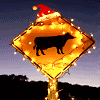






212 notes
·
View notes
Text
Void Success Archive
Status: Posting when I have the time & feel like it
Details on this blog:
My goal is for this blog to be a source of help & motivation for the void/I AM state & manifesting (you don't have to enter the void to manifest any of the things in these stories, see my other side blog @loasuccessarchive). For more information on what the void/I AM state is, you can read this, this and this
Please read this if you are considering getting coaching or paying someone to enter the void for you...
Stories I archive: ones that included details about what they manifested and/or helpful information on how they entered the void state.
To maintain quality, I don't archive stories if: I don't think they were particularly helpful, the majority of the font used/writing made it difficult to read, they are NSFW/inappropriate or I feel they may not have entered the void
Unlogged posts are under the tag #to be logged
For past blog updates, see here
2023 Archive (ordered by date originally posted or closest estimate):
January
February
March
April
May
June & July
2023 Stats:
Currently archived up to: 25th June 2023
Total unique archived success stories: 197
Other:
Search the Directory - sorted by blogger usernames
2022 Archive (164)
2021 Archive (15)
Quotes from the Archive (all quotes are tagged)
Tags by method: #yoga nidra, #lucid dreaming, #i am
See my side blog @voidarchivefiles for other archived posts on the void including methods, tips and resources
See my side blog @loasuccessarchive for a collection of 100+ extraordinary success stories that used law of assumption to manifest and not the void
587 notes
·
View notes
Text

Fitness quotes
#fitness quotes#fitness#quotes#motivational fitness quotes#fitness quotes for motivation#fitness motivation quotes#inspirational fitness quotes#fitness motivation#health and fitness quotes#fitness quotes motivation#motivational quotes#inspirational quotes#workout quotes#gym fitness quotes#fitness quote#fitness quotes 2021#dumb fitness quotes#fitness quotes blog#best fitness quotes#funny fitness quotes#fitness quotes status#gym quotes
1 note
·
View note